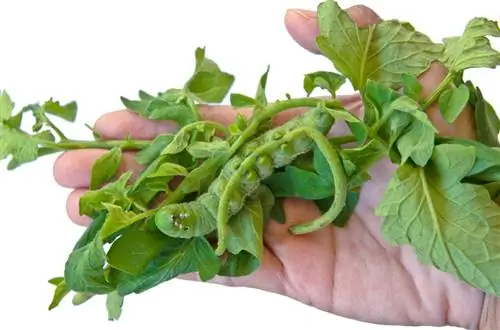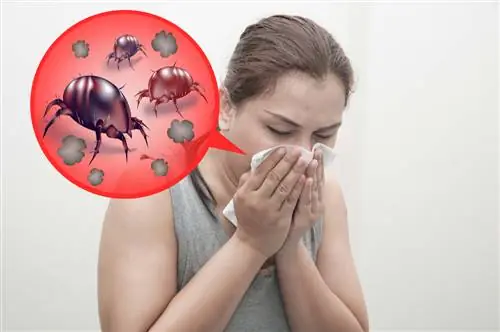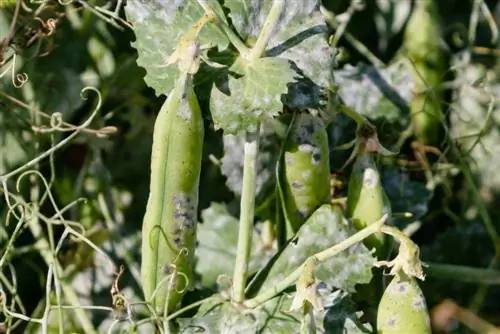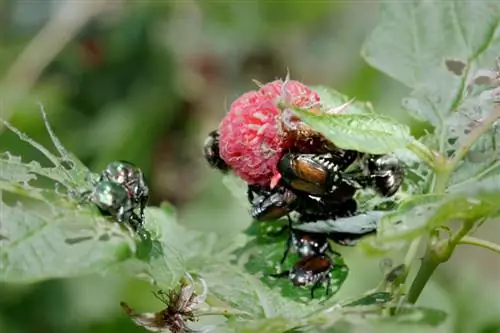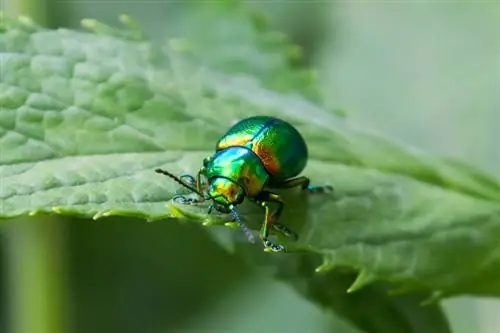- Author admin [email protected].
- Public 2024-01-02 03:03.
- Last modified 2025-01-23 11:19.
If the natural balance in tomato cultivation gets out of hand, pests appear out of nowhere. The following lines illustrate how you can identify the most common culprits early and fight them vehemently.
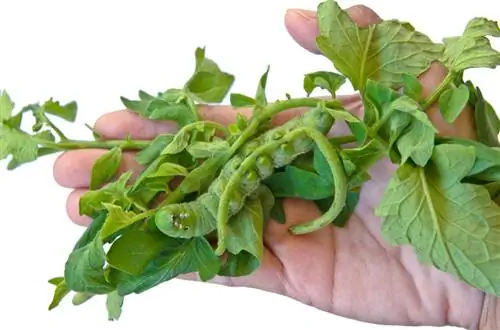
What pests attack tomatoes and how can you combat them?
Common pests on tomatoes include tomato leaf miner flies, tomato rust mites, whiteflies and thrips. To combat this, infected leaves can be removed, beneficial insects such as parasitic wasps and predatory mites can be used, and preventive measures such as close-meshed nets and glue boards can be used.
Two pests specialize in tomatoes
Among the large number of plant pests, the following two offenders primarily target tomatoes.
Tomato leaf miner flies - (Liriomyza bryoniae)The hatched larvae eat their way through the leaf tissue in clearly visible mining tunnels.
- remove affected leaves immediately
- to combat beneficial insects, such as parasitic wasps
Tomato rust mites - (Aculops lycopersici)The infestation only manifests itself very late in the form of yellow, withering leaves and brown-colored shoots. The fruits cork and fall off.
- use predatory mites in the early stages
- if the infestation level is high, dispose of the entire tomato plant
Ubiquitous pests do not spare tomatoes
It is often the usual suspects among the garden pests that affect your home-grown tomatoes. The following candidates particularly stand out here:
Whitefly - (Trialeurodes vaporariorum)The 2 millimeter small, white-powdered insects live on the undersides of leaves. Here they suck the life out of the plant. When shaken, a white cloud of these pests rises. In the open field, a close-meshed net protects the plants from infestation. Beneficial insects such as ladybirds and parasitic wasps have proven successful in the greenhouse.
Thrips - (Thysanoptera)The tiny, black insects cause mottling on the leaves and fruits while they extract the plant sap from them. Meanwhile, the larvae damage the roots in the soil with their feeding activity. As a preventative measure, hang up blue glue boards (€12.00 on Amazon). An infestation is kept under control by beneficial insects such as lacewing larvae, hoverflies and predatory mites. Spray a soft soap solution and garlic tea repeatedly.
Read how you can recognize, treat and prevent other tomato diseases and find out about black spots on tomatoes.
Tips & Tricks
The use of beneficial insects is becoming increasingly common in environmentally friendly pest control. Since parasitic wasps and their colleagues are rarely bred in hobby gardens, specialist retailers have concentrated on this offer. The little helpers are delivered in special transport containers, including precise instructions for application in the bed or greenhouse.
Also find out about brown spots on tomatoes.

